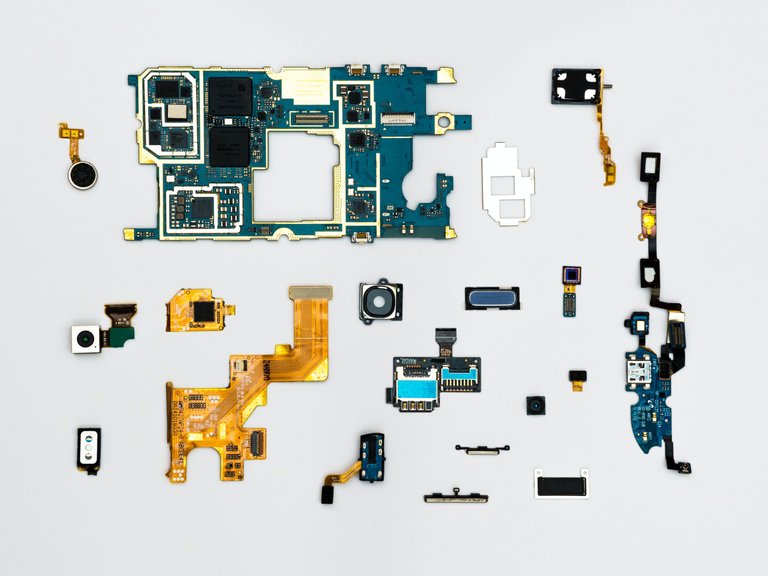
Subscribe now to Knowmad Alert
Specialized Content Curation | March 9 - 15 | Week 16
Emerging responses to the COVID-19 crisis from family farming and the agroecology movement in Latin America – A rediscovery of food, farmers and collective action

The study analyzed textual information captured through surveys that revealed to the authors four types of initiatives that were deployed or adapted in response to the COVID-19 pandemic and divided them as follows:
- Direct sales of food from producer to consumer, generally existing prior to the health crisis, but adapted/reinforced to cope with it;
- Short value chains linking rural and urban organizations and individuals supported by national or local governments, retrofitted through new health and safety protocols;
- Newly developed support and training programs on sustainable food production for self-consumption or local trade, in rural, urban or peri-urban settings;
- Food assistance and aid initiatives focused on vulnerable populations, relying on solidarity networks associated with the agro-ecological movement.
The authors concluded that the pandemic highlights the key role played by local food systems and value chains and the need to strengthen them through public policies as a way of building food resilience in times of crisis.
Click here to read the full paper [efn_note]Tittonell, P., Fernandez, M., El Mujtar, V. E., Preiss, P. V., Sarapura, S., Laborda, L., Mendonça, M. A., Alvarez, V. E., Fernandes, G. B., Petersen, P., & Cardoso, I. M. (2021). Emerging responses to the COVID-19 crisis from family farming and the agroecology movement in Latin America – A rediscovery of food, farmers and collective action. Agricultural Systems, 190, 103098. https://doi.org/10.1016/j.agsy.2021.103098[/efn_note]
Subscribe now to Knowmad Alert
Lysergic acid diethylamide (LSD) promotes social behavior through mTORC1 in the excitatory neurotransmission

Although the mechanisms of action remain elusive, clinical studies have reported that the psychedelic lysergic acid diethylamide (LSD) increases empathy and social behavior (SB) in humans.
The authors used a multidisciplinary approach involving in vivo electrophysiology, optogenetics, behavioral paradigms, and molecular biology, studied the effects of LSD on SB and glutamatergic neurotransmission in the medial prefrontal cortex (mPFC) in male mice. Acute injection of LSD (30 μg/kg) failed to increase SB. However, repeated administration of LSD (30 μg/kg, once daily, for 7 days) promoted SB, without eliciting antidepressant/anxiolytic-like effects.
Optogenetic inhibition of CPM excitatory neurons drastically inhibits social interaction and negates the prosocial effect of LSD. LSD potentiates α-amino-3-hydroxy-5-methyl-4-isoxazole propionate (AMPA) and 5-HT2A, but not N-methyl-D-aspartate (NMDA) and 5-HT1A, synaptic responses in the MPC and increases phosphorylation of the serine-threonine protein kinases Akt and mTOR. In conditional knockout mice lacking Raptor (one of the structural components of the mTORC1 complex) in excitatory glutamatergic neurons (Raptorf/f:Camk2alpha-Cre), the prosocial effects of LSD and potentiation of 5-HT2A/AMPA synaptic responses were abrogated, demonstrating that LSD requires mTORC1 integrity in excitatory neurons to promote SB. In contrast, in knockout mice lacking Raptor in CPM GABAergic neurons (Raptorf/f:Gad2-Cre), LSD promotes SB. These results indicate that LSD selectively enhances SB by potentiating CPM excitatory transmission via 5-HT2A/AMPA receptors and mTOR signaling. Activation of 5-HT2A/AMPA/mTORC1 receptors in the CPFm by psychedelic drugs should be explored for the treatment of mental illnesses with SB disturbances, such as autism spectrum disorder and social anxiety disorder.
The results suggest that the prosocial effects of LSD require intact and functional excitatory neurotransmission in the MPC.
Click here to read the full paper [efn_note]De Gregorio, D., Popic, J., Enns, J. P., Inserra, A., Skalecka, A., Markopoulos, A., Posa, L., Lopez-Canul, M., Qianzi, H., Lafferty, C. K., Britt, J. P., Comai, S., Aguilar-Valles, A., Sonenberg, N., & Gobbi, G. (2021). Lysergic acid diethylamide (LSD) promotes social behavior through mTORC1 in the excitatory neurotransmission. Proceedings of the National Academy of Sciences, 118(5), e2020705118. https://doi.org/10.1073/pnas.2020705118[/efn_note]
Subscribe now to Knowmad Alert
Blockchain for Internet of Things security: a tertiary study.

The authors argue that the integration of the Internet of Things (IoT) and Blockchain allows taking advantage of the security qualities of the Blockchain.
The study conducted a systematic literature mapping on 45 secondary studies, in order to analyze Blockchain technology in IoT security by characterizing its areas, uses, frameworks, benefits and challenges. We obtained 25 areas, 17 uses, 41 frameworks, 38 benefits and 40 challenges all related to the application of Blockchain in IoT security. We found that the quality of most of the secondary studies analyzed was low, with few studies following a rigorous methodology, indicating that there is a need to improve the quality of studies and their reporting in this area.
Regarding the most interesting findings, the main areas of application of Blockchain in IoT were industry and smart environments. Regarding the uses of Blockchain in IoT security, data management and identity stand out. The most widely used frameworks are Ethereum and Hyperledger-Fabric. The main benefit of applying Blockchain to IoT is data security. The main challenges of Blockchain today are performance and capacity limitation of IoT systems.
of IoT systems.
The contribution of this work to the industry lies in the identification of frameworks that integrate Blockchain with IoT, as well as their benefits, which could help organizations considering venturing into the area. In academia, the challenges identified can serve as a guide for future research.
The authors recommend comparing the frameworks identified in this research, and proposing improvements to these frameworks to solve the challenges reported. Finally, it could be evaluated which framework is better for each of the identified uses of Blockchain in IoT security.
Click here to read the full paper [efn_note]Blockchain para la seguridad de la Internet de las Cosas: un estudio terciario - ProQuest. (2021). Proquest.com. https://search.proquest.com/openview/3e5d48efab44c8f9a32c7579c07a501b/1?[/efn_note]